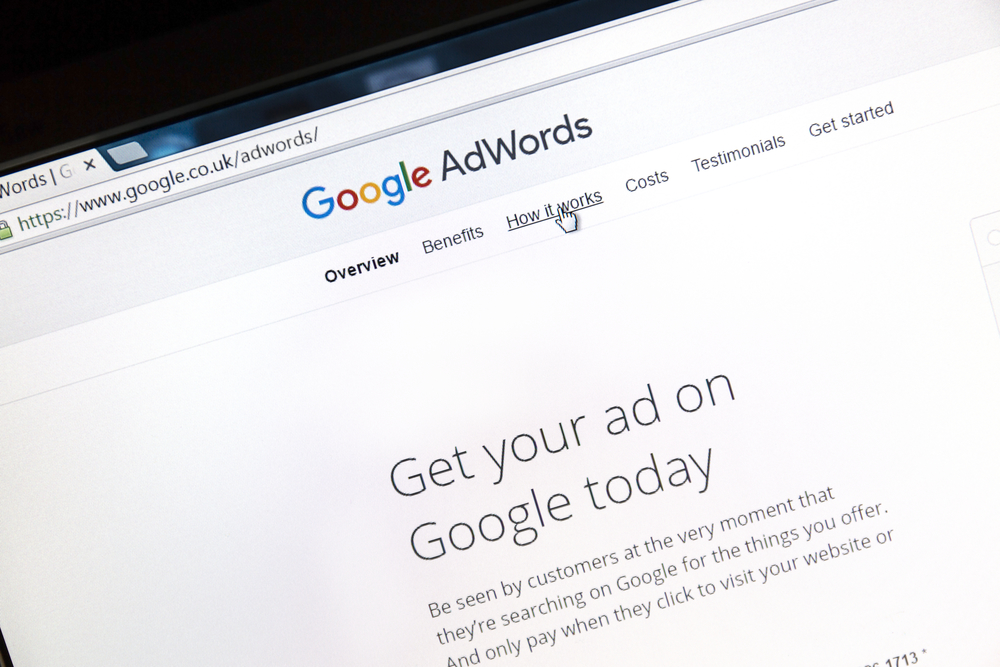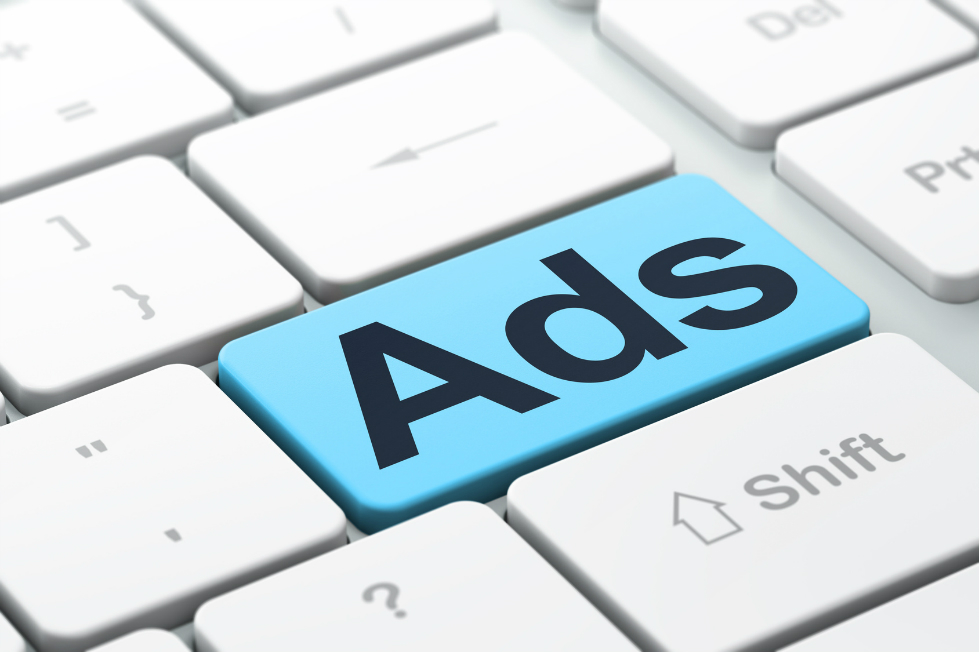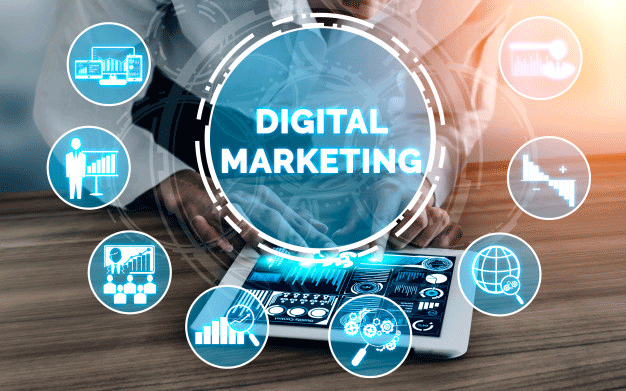
So you've decided to start your own digital marketing strategy. What's next? What's next? This article will help you navigate the different steps, starting with choosing your channel and researching your audience. This article will help you create a customer journey, and how to split test your strategy. This will allow you to see if your new strategy works for your brand. If it doesn't work, don't worry. There are many other businesses who have had the same question: "How do I start a digital marketing strategy?"
Researching your audience
You must research your audience before you can create a digital advertising strategy. Quantitative research involves analyzing large numbers and creating statistical results. For example, to create an email blast for a certain audience, you must identify their problems and interests. You can also look at their past purchases to determine their buying habits. Then you can target your marketing messages to the targeted audience segments.
You must understand your audience to create a digital marketing strategy that works. You will not be able understand their wants and needs if you don't conduct research. Research can help identify those needs and tailor content to them. You can also predict their needs, which will help you become more efficient in your marketing. Here are some tips for researching your audience:
Interviews: Surveys can help you better understand your audience. You can ask existing customers via email, publish customer reviews on social media, and conduct interviews. These surveys can give you valuable insight into your audience's motivations. This information will help you to create your digital marketing strategy. It's important to research your audience, but it is equally essential to create a compelling campaign. You'll be able engage your audience and increase your sales.
Segmentation - By understanding your audience's lifestyle, interests and preferences, you can tailor the messaging to them. Segmentation is a powerful tool to create stronger messages and connect with customers in a more personal manner. Adidas, for example, sent a gender-specific email to its customers, while the clothing company categorised its audience by gender. Customers buy jeans in large numbers, so a survey asking them how they rate the retailer would result in an average rating of 8/10.
Channel selection
The key to promoting your product/service is choosing the right digital marketing channels. Your goals, competition and budget will all influence your choice. Different channels produce different results. Choose wisely and choose what is best for your needs. Which channels you use will affect the content and format of the ads you share with your target audience. While content marketing is still the most effective form of marketing and will continue to be relevant, you should make use of these channels if you want your audience to see it.

The goals of the business will dictate which channel you choose to use. You should determine your long-term as well as short-term goals. Long-term goals could include increasing revenue by 20% in the next two-years. Short-term goals might include generating 400 qualified leads within six to eight months, or increasing website traffic by 70% in just eight months. So that you can decide which channels will work best, it is important to clearly identify your short-term (and long-term) goals.
Be sure to evaluate the effectiveness of each channel before making a decision on which channels you will use. Each channel comes with its own strengths, weaknesses and freedoms. It is important to identify the type of content you need for each channel as well as its cost. Be sure to allocate all the budget you have before you consider using other channels for your digital marketing strategy. You should use Twitter or Facebook to generate buzz.
Customer journey creation
A customer journey map is an essential element of any digital marketing strategy. These maps show the path a customer takes from decision to action. The customer journey maps can be used to show customers the entire customer journey, from the first stage of a sales funnel to when they become loyal customers. A customer journey map can help you identify areas where you can make improvements.
In a nutshell, a customer journey map represents a prospect's journey toward purchase. It helps marketers map out the questions they ask and the pain points they experience along the way. The higher-funnel stages are aimed at creating awareness and interest, while the final stages are devoted to fostering brand loyalty. This process should begin with awareness, which can occur through social media, word of mouth, search engine suggestions, blogs, SMS, and apps.
After researching and learning about a brand, potential customers begin the information-gathering phase of the customer journey. Although they may not know you personally, they will know what they are looking for. In this phase of the Customer Journey, the brand should have content that helps customers make an informed decision. Additionally, customers can get a free trial period from brands to overcome any last hurdles during their buying journey.
Marketers can use a customer journey map to help them target advertising by understanding how customers buy products and services. Each stage of a customer journey should be identified as a buyer persona. Marketers can tailor their marketing campaigns according to the goals of each stage by identifying these. A customer journey map is a tool that marketers can use to better understand their target audience. It identifies what motivates each customer's decisionmaking stage.
Split testing your strategy
Split testing in various areas of your digital strategy can make your business more profitable. You can test headlines and page copy as well as button text, image, social media buttons, email marketing, and calls to action. Here are some examples of scenarios you can test. Split testing is useful in determining which marketing strategies will increase sales or profitability. Make sure to use the correct sample size. Split testing should not be done less than once a month and should have a high confidence rating.
Split testing can help you determine if certain marketing strategies are working or not, and where to make changes to maximize their effectiveness. Split testing helps you monitor whether your online marketing strategy generates leads and brings in returns. Split testing is the process of trying out different versions or parts of a website. You can use the split test results to determine if your website makes money. Once you have determined which variations are generating more leads, you can make changes to your digital marketing strategy.

ClickFunnels offers a library that allows you 6 different versions to test one advertisement. It can help you get ideas for split testing. Facebook is another place that can provide split-testing ideas. Facebook has many examples of ads that you can copy to find out which ones perform best. Split testing is also possible on landing pages. Split-testing is possible in landing pages. One example: Moving your CTA to the bottom of the page increased conversions by 304%. However, removing it from the landingpage caused cart abandonment rates drop by 33%.
Split testing is an integral part of conversion optimization. It involves dividing traffic into two groups - the control group and the variant. Split testing means that you split traffic so 50% of the traffic sees the control variant and half the variant version. In a multivariate test, you divide the traffic into equal segments and show one version of the variant to each group. Split testing is a great way to improve your digital marketing strategy.
Measuring success
One of the first steps in establishing a successful digital marketing strategy is to measure its results. You have many options to measure the effectiveness of your digital marketing strategy, such as determining how many visitors convert into buyers. Another way to measure effectiveness of a campaign is by using other metrics, such as how many pages were viewed. These metrics can be used for determining the success of a campaign based upon its target audience as well as the effectiveness a specific marketing strategy.
To evaluate the success your digital marketing campaigns, you must track key performance indicator (KPIs) to gauge its success. KPIs are quantifiable metrics that track how your marketing team performs against a specific goal or objective. These targets can be either high- or low-level. These KPIs help to identify the success of campaigns and provide guidance for future campaigns.
It is important to set clear objectives for measuring the success of your digital marketing strategy. To illustrate, how many people did your website attract? Is your website inviting purchase? Are your email campaigns generating more sales? Are you getting new business? How many people read your email and purchased? These are just some examples of the data you should track in order to assess whether your digital marketing strategy works. It will ultimately all come down to your goals and objectives as well your digital marketing strategy.
FAQ
How do you start SEO on your website?
Understanding what people are searching for in search engines such as google is the first step to getting a Google rank. This guide will help to make sure your content is ranked highly by Google. You can also visit our other guides for content marketing.
To get started, you need to create a plan. Then think about which keywords you want. There are two types, broad keywords (like "digital Marketing") and specific keywords (like "seo".
The next step is to determine your goals, which could be increasing brand awareness, driving leads or sales.
Once you have defined your goals, it's time to begin writing content. Here are some SEO-friendly tips.
After you have written your content, it is time to post it to your website or blog. If you already own a website this may mean updating your pages. If you do not have a website you can hire a web designer to create one.
Once you have published your content, make sure to link it to other websites and blogs. This will make your content more visible and increase its exposure.
How Often Should My Site Be Updated?
Updating your site regularly can improve its rankings. However, it's not always necessary. You don't necessarily need to keep it updated if you have already created quality content.
SEO still considers link building relevant.
Link building will continue to be important, but the way you approach it today is very different from 10 years ago. The biggest challenge for any business today is how they find customers and make sales. Search engine optimization helps with this.
Businesses need to be active on social media. Content marketing strategies are essential as well. It seems that link building is not as effective as it once was because Google penalizes websites with too many links pointing back at them. This is because linking to multiple sites can lead to Google penalizing you.
All of these factors make link building less valuable in ranking websites.
Why SEO strategy is so important
The main goal of search engine optimization (SEO) is to increase traffic to your site by getting as many people as possible to find you when they use Google.
Search engines such as Google, Yahoo!, Bing, and others store information about websites on servers called "crawlers," which send this data back to the company's central database. This allows them index web pages for search purposes.
More people will click your link and visit your website if your website is high up in the search results. Therefore, you won't be found if you are not visible in these searches.
It is important to rank high in search engines. This will ensure your site is noticed. You can achieve this by using two methods: organic and paid advertising.
Paid Advertising – Paid advertising is when companies pay per click to have their ads appear higher than other sites in search results. These ads can be banner ads or text ads.
Natural Organic Links - Natural organic links are those where you have built an excellent site over time and earned your industry's trust. Over time, links are built naturally through guest posting, commenting on other sites, and so forth.
To remain ahead of the pack, it is important to invest continuously in both forms marketing.
What is an SEO strategy?
SEO strategy is essential to ensure you are not missing any opportunities for your business to grow. If you don't rank higher in search results, it doesn't make sense to have great content that no one ever finds.
A good SEO strategy helps you build relationships with influencers and experts within your industry. Their connections and knowledge can help you learn new tricks and techniques that will allow you to outperform your competition.
How long does SEO take traffic to build?
Traffic generation through SEO usually takes 3-4 months. It depends on many variables.
-
Content quality
-
Backlinks
-
Targeted keywords
-
Competitor rankings etc.
SEMrush offers a free trial for those who are new to SEO. You can monitor all aspects of your SEO campaign with them, including competitor research and backlink profile, top pages and local listings, organic traffic stats, reports and more.
Statistics
- 64% of marketers actively create SEO campaigns because they help hit multiple key performance indicators (KPIs), including increasing traffic, helping your site rank for relevant keywords, improving your conversion rate, and much more. (semrush.com)
- Which led to a 70.43% boost in search engine traffic compared to the old version of the post: (backlinko.com)
- A 62.60% organic traffic boost to that page: (backlinko.com)
- Deleting those 10k pages is one of the main reasons that he improved his site's organic traffic by nearly 90%: (backlinko.com)
- If two people in 10 clicks go to your site as a result, that is a 20% CTR. (semrush.com)
External Links
How To
What You Need to Know About Duplicate Content and SEO
Duplicate content is an issue for both webmasters and search engines alike. There are two types of duplicate content; internal and external. Sites that contain identical content on multiple pages can be called internal duplicates. External duplicates can occur when a page provides similar information to another URL.
Internal duplication occurs when more than one page contains the same text or images. This happens due to poor copywriting skills. Poor copywriting means that you haven't written unique content for each page. When you do this, you create internal duplicates.
External duplication occurs when a single page contains similar information to other URLs. If you have two pages that are identical to each other, such as a product listing all of your products or a category listing all of them, you have external duplication.
Google doesn’t penalize websites who have duplicate content. Sites that attempt to manipulate Google's algorithm to rank higher are subject to penalties. Duplicate content on your website? Make sure it's not manipulative.
Link building is the most common method to manipulate Google’s algorithm. Link building involves creating hyperlinks between your website (and other websites). These links are unnatural and may lead to Google devaluing your website.
There are several ways to avoid link manipulation:
-
Avoid low-quality backlinks (those that come from spammy sources).
-
Use anchor texts that are relevant for your website.
-
Create unique content to each page of the website.
-
High-quality content.
-
It is important to have a domain name that is memorable.
Don't be too concerned about duplicate content. Instead, make sure you have unique content on each page of every website. This will allow you to rank higher in search engine results pages.